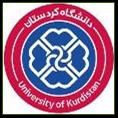|
Course prerequisites: Advanced Physical Chemistry This course is an introduction to chemical kinetics and mechanisms from theoretical and experimental points of view. Course Outline: · Part 1: Fundamental Concepts of Kinetics · Part 2: Kinetics of More Complex Systems · Part 3: Techniques and Methods · Part 4: Theories of Reaction Rate · Part 5: Reactions in Solution · Part 6: Potential Energy Surfaces · Part 7: Reactions on Surface · Part 8: Enzymatic Reactions
· Midterm Exams (2): 40% · Homework and Quizzes: 20% · Final Exam: 40%
· Lectures: 1.5 sessions per week (2 sessions in one week and 1 session in the next week) for 16 weeks, totaling 24 sessions · Problem-solving sessions: Every few weeks · Exams: Midterms and a comprehensive final
· [1] J.I. Steinfeld, J.S. Francisco, W.L. Hase, Chemical kinetics and dynamics, Prentice-Hall, 1989. · [2] M.R. Wright, Fundamental chemical kinetics: an explanatory introduction to the concepts, Elsevier, 1999. · [3] L.G. Arnaut, S.J. Formosinho, H. Burrows, Chemical kinetics: from molecular structure to chemical reactivity, Elsevier, 2006. · [4] S.K. Upadhyay, Chemical kinetics and reaction dynamics, Springer, 2007. · [5] J.E. House, Principles of chemical kinetics, Academic Press, 2007.
|


|
Department of Chemistry, Faculty of Science, University of Kurdistan |

|
Mehdi Irani Teaching duties Methods DL_Poly |
|
Session |
Subject |
Reference |
|
1 |
Rates of Reactions; Dependence of Rates on Concentration (First-, Second-, Zero-, Nth-Order Reactions) |
[5] |
|
2 |
Cautions on Treating Kinetic Data; Effect of Temperature |
[5] |
|
3 |
Second-Order Reaction (First-Order in Two Components); Third-Order Reactions |
[5] |
|
4 |
Parallel Reactions; Series First-Order Reactions |
[5] |
|
5 |
Series Reactions with Two Intermediates; Reversible Reactions |
[5] |
|
6 |
Autocatalysis; Effect of Temperature |
[5] |
|
7 |
Problem Solving – Chapters 1 and 2 |
[5] |
|
8 |
Techniques: Rate Constants, Half-Lives, Initial Rates, Flooding, Logarithmic Method |
[5] |
|
9 |
Effect of Pressure |
[5] |
|
10 |
Equilibrium and Rate of Reaction; Statistical Mechanics of Equilibrium and Activated Complex |
[4] |
|
11 |
Collision Theory and Its Components; Weaknesses of the Theory |
[4] |
|
12 |
Transition State Theory – Thermodynamic and Partition Function Approaches |
[4] |
|
13 |
Comparison of TST with Arrhenius and Collision Theory; Reactions Between Polyatomic Molecules |
[4] |
|
14 |
Problem Solving – Chapters 3 and 4 |
[4] |
|
15 |
Midterm Examination |
- |
|
16 |
Long-Range Potentials; Empirical Intermolecular Potentials |
[1] |
|
17 |
Bonding Potentials; Internal Coordinates and Vibrational Modes |
[1] |
|
18 |
Potential Energy Surface Diagrams, Types and Features |
[2] |
|
19 |
Terminology of Enzymatic Reactions; Michaelis–Menten Equation |
[3] |
|
20 |
Mechanisms with Two Enzyme–Substrate Complexes |
[3] |
|
21 |
Enzyme Inhibition |
[3] |
|
22 |
Effects of pH and Temperature on Enzyme Catalysis |
[3] |
|
23 |
Surface Adsorption and Isotherms (Langmuir, Dissociation, Competitive) |
[3] |
|
24 |
Surface Kinetics: Unimolecular and Bimolecular Reactions, Activation Energies |
[3] |
